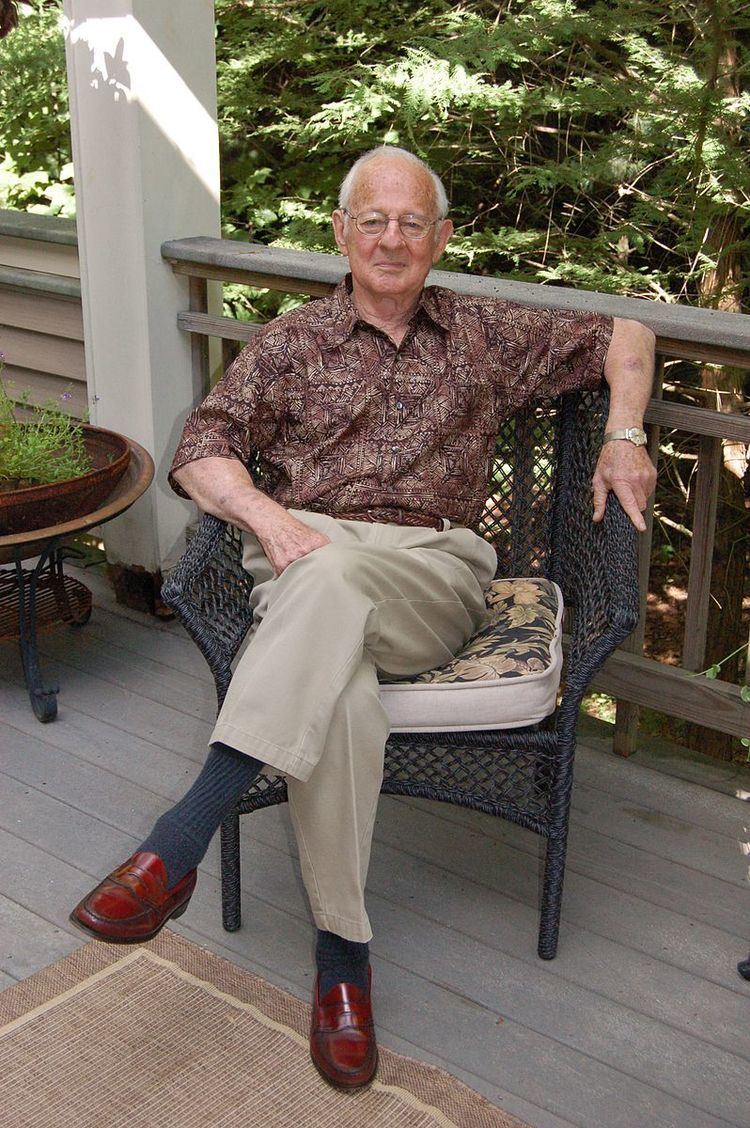Nationality American Name William Thomson | ||
 | ||
Born May 24, 1927 (age 98) ( 1927-05-24 ) Fort Worth, Texas Occupation Music TheoristComposerFormer School of Music Dean – USCProfessor Emeritus – USC Books Guide for the Young Economist, Schoenberg's Error People also search for Leon Burton, Malcolm Tait, M. J. Tait | ||
William Ennis Thomson (born 1927, Fort Worth) is an American music educator at the collegiate level, music theorist, composer, former Music School Dean and Professor at the Thornton School of Music, University of Southern California from 1980 to 1992. His overarching interest in research centers around the cognitive and perceptual foundation of music, insight for which is found in his 2006 article, Pitch Frames as Melodic Archetypes, Empirical Musicology Review, 1.2, 1-18.
Contents
Thomson has served the faculties of SUNY Buffalo (1975–80) (Chair of Music and Albert Ziegle Professor); University of Arizona (Director of Graduate Studies) (1972–75); Case Western Reserve University (Fynette Hill Kulas Professor) (1969–72); Indiana University School of Music (1961–69) (Professor of Music Theory; Chair Music Theory Department); University of Hawaii Scholar in Residence (1967–68); Sul Ross State University (1951–60), and Ford Foundation composer in residence (1960–61).
He chaired the ETS Advanced Placement in Music Test Committee (1975–79); served as Music Panel Member and Examiner for the National Endowment for the Arts (1971–75, while Nancy Hanks was Chairman); Fellow and Policy Committee member of the Ford Foundation; served as a key participant in the Contemporary Music Project (1963–75); Board member of the Buffalo Philharmonic (1976–80); taught and composed works for wind band, orchestra, chorus (accompanied and a capella); and various chamber music media. Thomson also served in the Armed Forces: U.S. Navy (1945–46).
Collegiate education
Thomson earned two degrees from the University of North Texas: Bachelor of Music (composition), 1948, and a Master of Music (composition) 1949. He also earned a PhD in Music Theory and Philosophy in 1952 from Indiana University, Bloomington. While at North Texas, Thomson was a member of the inaugural Laboratory Dance Band (1946–47) — the forerunner of the One O'Clock Lab Band — during the launch year of the first college degree in jazz offered in the world. At North Texas, he crossed paths with:
- Wilfred Bain, who, as dean of the School of Music, collaborated with Gene Hall to create the country's first jazz degree program in his final year and Gene Hall's first year (1947) before moving on to Indiana University where he rapidly built another major school of music; Bain, essentially pioneered a new post-war large-scale model for higher music education by creating and integrating two comprehensive music schools within full liberal arts universities (North Texas, during Bain's era, was a large teachers college, but emerged in the late 1950s as a liberal arts university)
- William F. Lee III, also a member of the first Lab Band at North Texas, who, later became a pioneering dean at a major music school, the University of Miami School of Music
Compositions
- Theme
- Dance
- Nocturne
- March
- Misterioso
- Scherzo
Honors & awards
Military service
Thomas served as a Seaman (S2c; Service No. 358 74 10) in the U.S. Navy from 1945 to 1946. He was a musician in a Navy Band at Camp Elliott, California. Then he joined the Navy Band (as jazz trumpet soloist) aboard the USS Lexington (CV-16) as it sailed from San Diego to Pearl Harbor. While at Camp Elliott, Thomson did freelance arranging for Gus Arnheim, who, in the 1940s, owned a nightclub in downtown San Diego where he kept a small band going. Thomson was not permitted to enter the club during performances (he was too young); but he listened to the band playing his arrangements over the radio. Arnheim paid Thomson $15 for each arrangement.
Growing up
In his younger days, Thomson learned to play french horn and trumpet, both in the classical and jazz idioms. When Thomson was five, his father bought him a cornet, hoping to stave off his interest in the piano that his sister was studying ("boys didn't play piano"). And from that age, Thomson's mother began driving him to TCU on Saturdays for lessons with Don Gillis. When Thomson was eight, Don recommended that — since the highest paid member of any symphony in this country (after the concert master), was the principal French horn player — perhaps he should switch to horn. So he did.
The Gillis family lived in Polytechnic Heights, about four blocks from the Thomson family. The Gillis family attended Poly Baptist church, where the Thomson family were members. Don Gillis was very much involved in music at TCU.
Growing up, Thomson played French horn in Poly Baptist Church "orchestra," directed by Don Gillis. Don's sister, Eileen, played piano. The local postman, Mr. Snow, played baritone horn. A member of the Crystal Springs Ramblers, Kenneth Pitts, played violin. Thomson read the baritone part from the Broadman Hymnal, transposing it for horn.
Thomson attended Polytechnic High School, where he was involved in the band. Thomson became proficient at playing jazz solos on French horn with the Poly High School band. His high school band director was Perry Alton Sandifer (1910–2009), a trombonist, saxophonist, and clarinetist who, outside of school, performed in dance orchestras — one led by him bearing his name. Thomson graduated from Polytechnic High School in 1943.
Family
William Ennis Thomson (aka Billy, while growing up) was born 1927 in Fort Worth to the marriage of William Tell Thomson (a builder) and Ruby F. Thomson (née Schwarz; a homemaker). He had two siblings: Jack C. Thomson (b. 1912) and Aline Thomson (born 1918). William Ennis Thomson married Elizabeth Anne Everett, September 11, 1948, together, they had four children: Carol Anne, Mark William, Laurie Elizabeth, and John Everett. Wife Elizabeth died on July 16, 2011.
